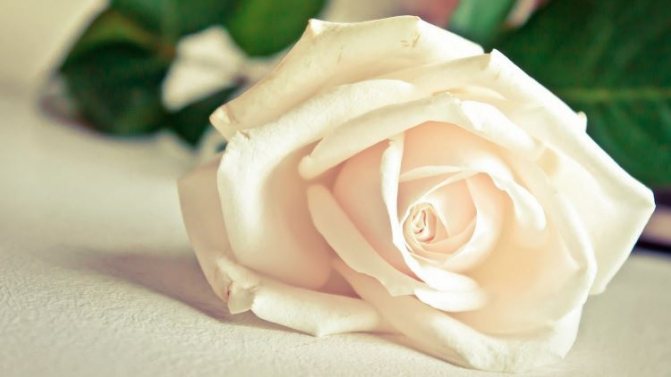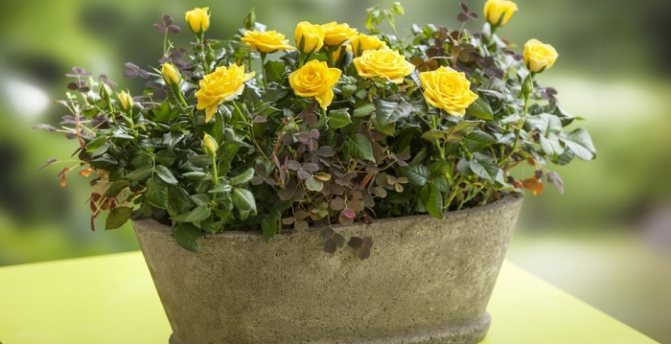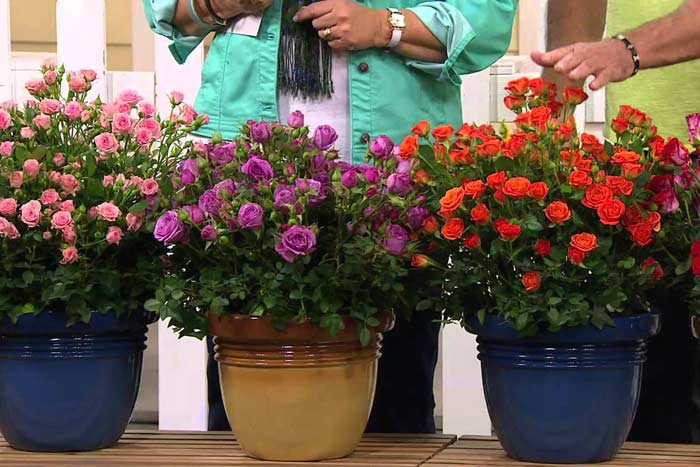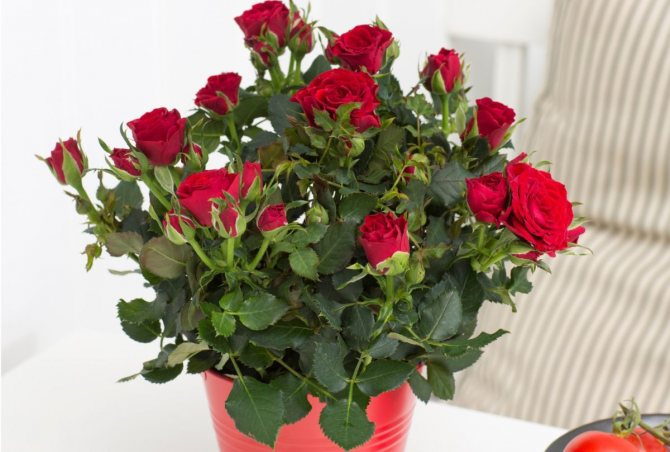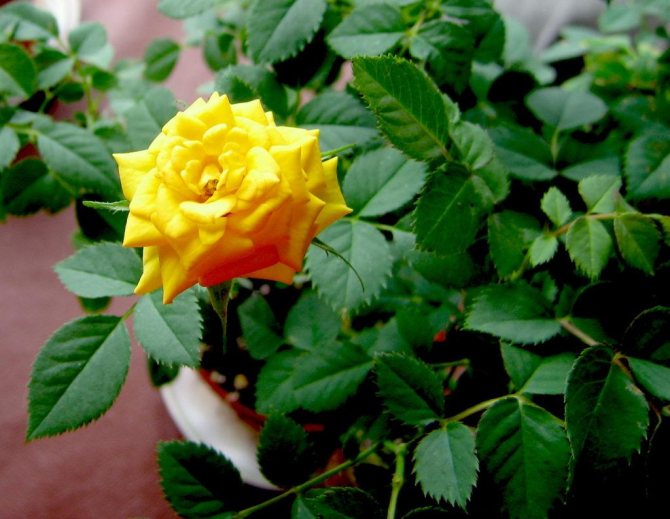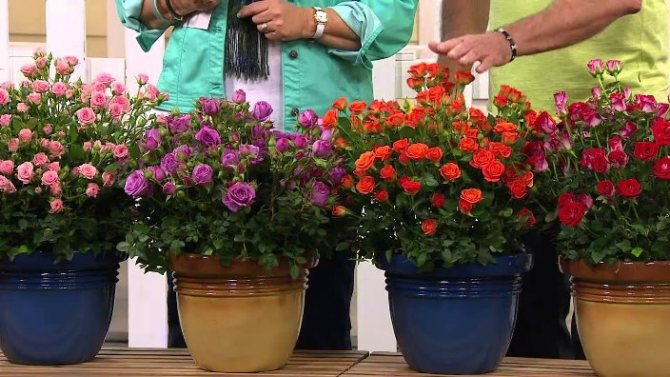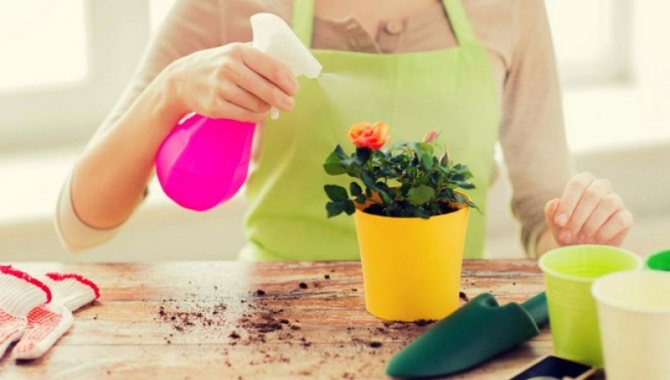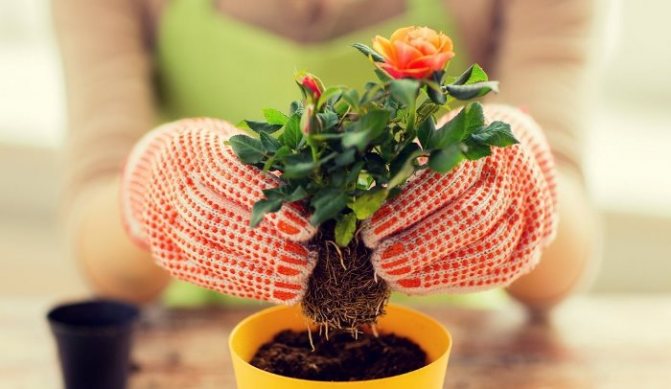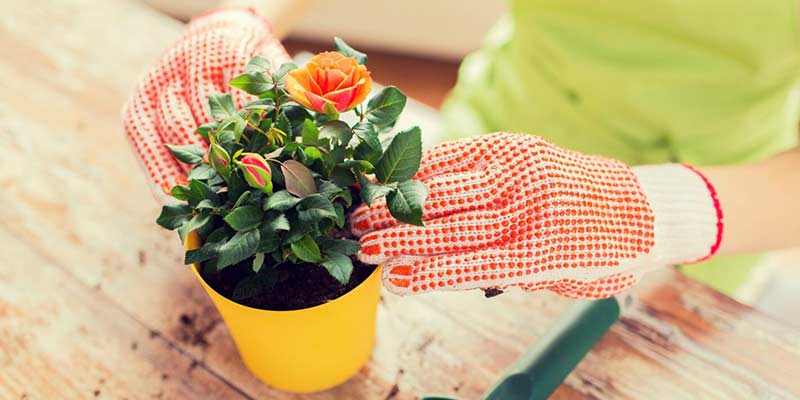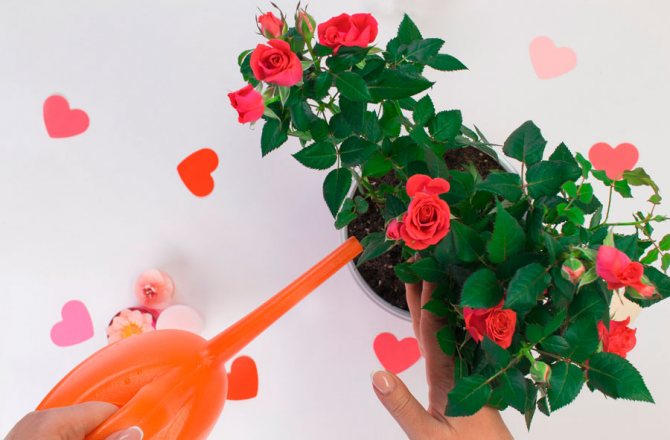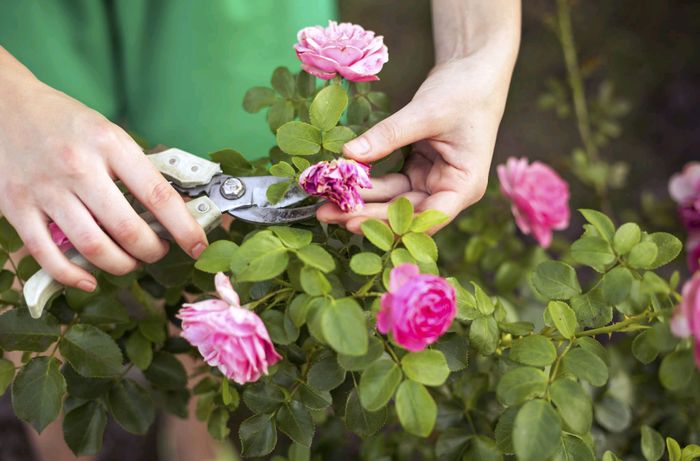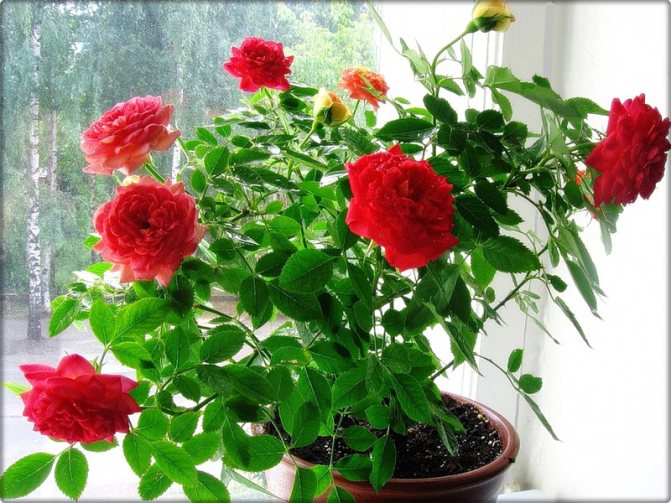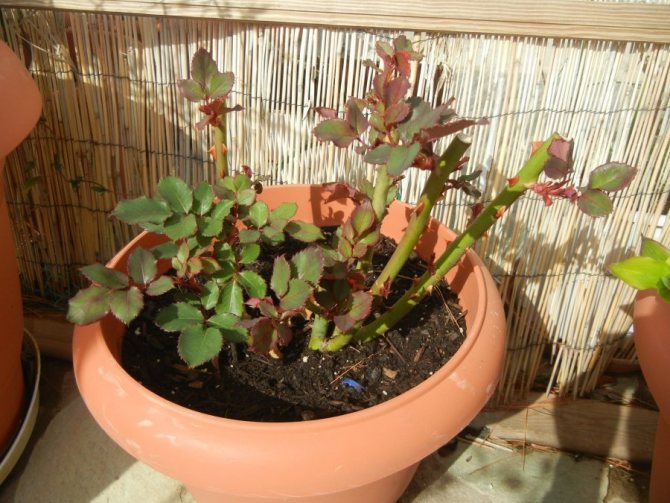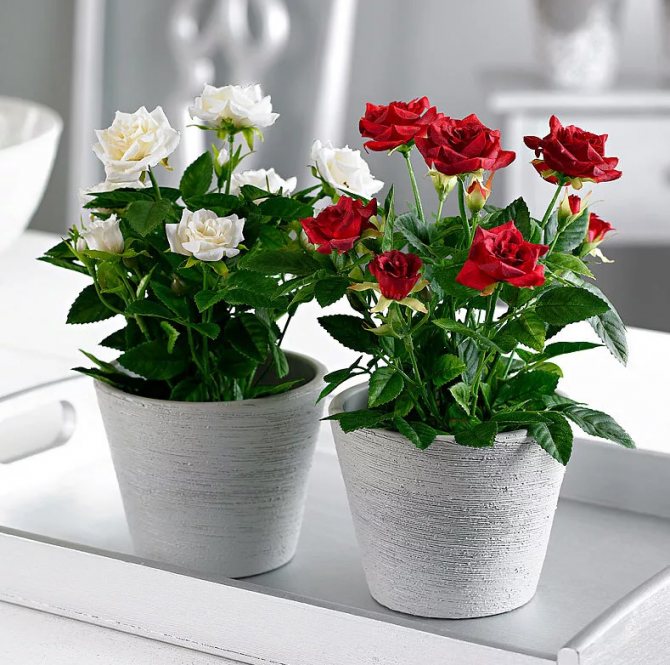Is it possible to plant a garden rose in a pot at home. Conditions for home growing roses
What to expect when growing roses at home - to get a flowering bush in late autumn, winter or early spring. This can be achieved by growing the rose in a cool, bright room, like in a greenhouse. It is moderately warm, long daylight hours and high humidity. You can get such conditions at home. It is enough to put a rose on a window illuminated by the sun. Separate the plant from the heating devices with a foil screen, install additional lighting that prolongs daylight hours and periodically spray the bush with warm (2-3 degrees higher than the air temperature) water.
In the summer, indoor flowers are taken out into the street. The first days, depending on the weather, must be protected from the sun's rays. In the morning and evening hours, it is useful to spray the rose bushes with water. Such procedures refresh the rose, increase air humidity and reduce the risk of harmful insects. But it should be remembered that water procedures in cloudy weather should not be carried out, the development of the bush may slow down. In autumn, without waiting for frost, flowers are returned to the windowsill.
To properly grow roses at home in a pot, it is very important to maintain the optimal moisture content of the earthy coma. Watering must be sufficient so that water flows out of the drainage hole. You can leave water in the pan for no more than 2 hours, after which excess water must be removed.
The soil for potted roses should contain the nutrients and trace elements that the plant needs. A mixture of greenhouse humus, clay, sand and rotted manure is suitable as a nutrient soil. You can replace this mixture with a ready-to-grow rose, which is available at any gardening store.
The rose took root and bloomed. Is the goal achieved? No, you need to get another one, of a different type, variety, color.
Classification - varieties and species
The need for a garden classification system is due to the development of the science of selection. Acquaintance with the classifier allows breeders to continue their work on breeding new varieties of the "queen of flowers", and amateur flower growers, to properly care for their very capricious green pets. Without going too far into the abyss of breeding science, all currently existing species can be conditionally divided into several groups and classes, depending on the presence of stable garden traits.
The first version of the classifier was created and approved by the American Rose Society in 1976. In 2000, in a slightly modified and supplemented form, the classifier was published in Modern Roses. In accordance with this version, all roses can be divided into the following types: old, wild and modern garden roses, with subsequent gradation into certain groups depending on the color and number of petals.
Growing a climbing rose in a pot. Growing roses in pots - the subtleties of indoor floriculture
Ant ale
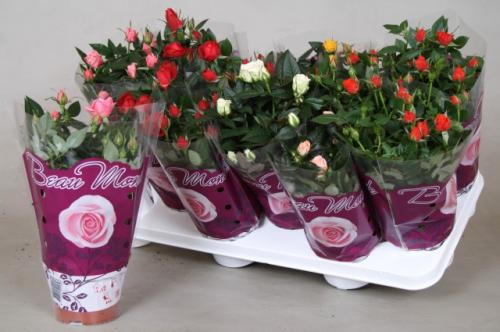
Do you think growing an ordinary rose in a pot at home is a waste of work? But no. A small paradise on the windowsill is possible. And although we are used to seeing the queen of the garden in the center of a flower bed or in a greenhouse, it is quite possible to grow her at home in a flower pot. Many even do business on this, and they are very successful.
What roses take root well in indoor conditions?
Any varieties are well suited for indoor indoor farming, but polyanthus, miniature and Bengal roses are best. They can be grown both from seeds and cuttings. To get a flowering bush from seeds is a laborious, lengthy process and expectations are not always justified. The rose may bloom, but not by variety.
The cuttings root well and start growing quickly. The main thing here is not to rush and not to force events by stimulating flowering. The plant needs to get stronger and gain strength in order to delight with buds and abundantly.
You can purchase a rose that is already in bloom at a flower shop. Usually such potted bouquets are given on holidays. Having received a plant as a gift, you should understand that business and smart agricultural technology are different concepts. we did everything so that the roses appeared as early as possible and there were as many flowers as possible. And how long this plant will live, they do not care. Therefore, a completely different approach is needed to such plants.
You were given a room rose - how to keep it
So, you were presented with the so-called indoor rose. Take a closer look at the bush. Usually it turns out that this is not one plant, but a whole bunch of cuttings, shoved into one pot, barely moving in growth, thin and weak, but! But blooming profusely.
Cute tiny buds, of course, in the middle of winter or early spring, cause a storm of positive emotions. But as practice shows, this flowering is not only the first, but also the last. the cuttings stuffed with chemistry do not withstand the load and die, despite all the efforts and the desire to keep them longer. Slowly and surely, the buds wither, the leaves crumble, the branches dry out. And we begin to painfully analyze what we did wrong. Yes, it is difficult to preserve such roses, but it is possible. And the first thing to understand is that these beauties are poisoned, they need to be treated.
- Tear off (pinch off, cut off) all the buds. The plant will stop spending energy on flowers. After all, it is on flowering that it spends the most nutrients.
- Do not transplant the plant into a larger pot under any circumstances, do not transplant at all. It has already been transplanted quite recently, it has already been affected recently.
- Dry air kills the leaves, so the pot is best placed in a large transparent container, which is easiest to maintain constant importance. This can be an empty aquarium (cover with glass on top) or a cut and fitted plastic bottle from mineral water.
- The rose should not be affected by drafts, cold air from the window.
- Water in moderation with settled water at room temperature.
- Do not forget to air the impromptu greenhouse 2 times a day and spray the leaves if necessary.
- The air temperature should be maintained at 15-18 degrees, lighting - 10 hours a day.
A transplant can be done only when you notice that the plant has grown significantly stronger, started to grow actively.
The best transplanting method is the method of transferring into a larger pot while preserving a lump and adding fresh soil to the bottom (after a layer of expanded clay), on the sides and on top. It is better to buy soil for roses ready-made, specially designed for flowering plants or for indoor roses.
After transplanting, the flower pot should be in a dark place for 24 hours. The first time after the transplant, it seems to freeze, but after 2 weeks, with proper care, it will start to grow. And after another 2 weeks, you can start applying complex fertilizers that stimulate flowering.
What you need to know before starting growing
Many people believe that caring for roses at home is just watering, but this is not the case. For flowering, the rose needs to create the most comfortable conditions.
You need to create the most comfortable conditions
Often, plants that are in a state of flowering are bought in flower shops, so it is important for them to ensure the correct adaptation period. So that all efforts are not in vain, you need to create peace and freedom for the plant in the first days. In no case should you immediately transplant roses brought from the store, as they need to get used to the indoor microclimate.
You need to pay attention to the conditions in which the plant was previously and try to accurately recreate them at home. To do this, you just need to consult with the seller. It is imperative to clarify information regarding:
- combinations of shadow and light;
- temperature;
- humidity;
- watering regime.
The addiction can last for 2 weeks, which is why during this period it is necessary to protect the plant from weeds, and also prevent overheating in the sun.
Important! It is better to replant the rose during the growth phase of the moon - this will increase the chances of growing a healthy and strong plant.
It is imperative to purchase special fertilizers for roses, which are available in almost every gardening store. It is important to immediately prepare the soil for the subsequent plant transplant. You can purchase a ready-made substrate, but you should strictly monitor its quality.
It is important to know how to properly grow roses at home. Flowers should not be allowed to dry out, so timely and abundant watering must be ensured. Withered leaves and flowers must be removed immediately with a secateurs. In this case, they will bloom much longer, and more inflorescences will appear.
It is important to prepare the ground right away.
When growing roses, you need to ensure that diseases and pests do not appear on them, so you should periodically inspect the leaves, stems and flowers. Observing all the simple rules, you can grow a beautiful flower that will delight you with its excellent flowering for a long time.
Roses in flowerpots. HOW TO GROW ROSES IN POTS
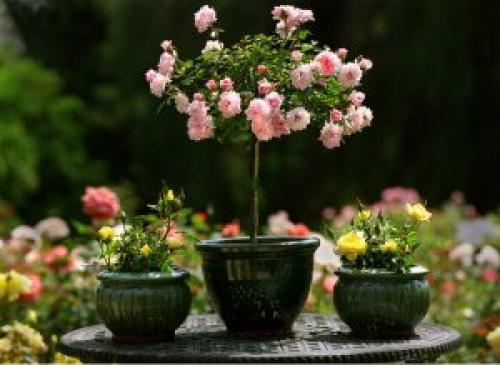

Did you know that anything that grows in the ground can be grown in containers. This is true even for potted roses. The only thing that is always important to remember is that they need to be watered and fertilized more often. These plants can be used to decorate a balcony, entrance, patio or terrace. They are versatile because they can move anywhere you want and grow in any size garden.
What steps should be taken for roses to grow well in pots
- Planting a rose in a pot. Fill the pot ⅔ full with planting mixture. Spread the roots over the top. Fill in the roots and fill the container to the end. Water well.
- Caring for potted roses. It is necessary to water the container rose when the soil mixture dries up 2-3 cm deep. Fertilize such plants once every 2 weeks with water-soluble fertilizers.
- The distance between the pots with roses is at least 60 cm. This is necessary for good air circulation between them and will reduce the risk of fungal diseases.
- Potted roses, like ground roses, need 6-7 hours of direct sunlight.
- The time and type of pruning for roses in tubs is the same as for flower beds.
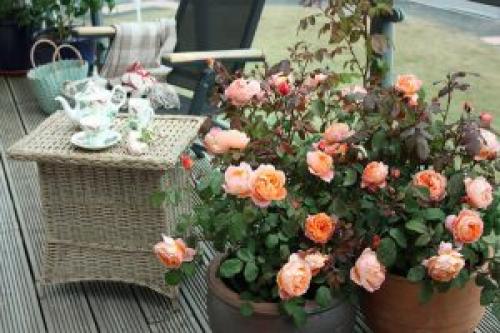

Pot. You can use plastic or ceramic. In cooler regions, plastic lives longer, cracks less in the cold, in contrast to ceramics. In warm areas, ceramic pots will keep the root system from overheating and drying out. The size of the container depends on the rose grown in it. The larger the flower, the larger the pot. For miniature roses, the height of the vessel should be at least 25 cm, if the height of the rose is 45 cm. A pot with a height of 30 cm is suitable for a patio for roses up to 60 cm in height. For shrub roses up to 60 cm in height, buy vases with a height of 40 cm. For roses with a height of 1.2 m fit high urns (from 50 cm in height). The diameter of the pot will depend on the root system. Please note that it must fit there freely.
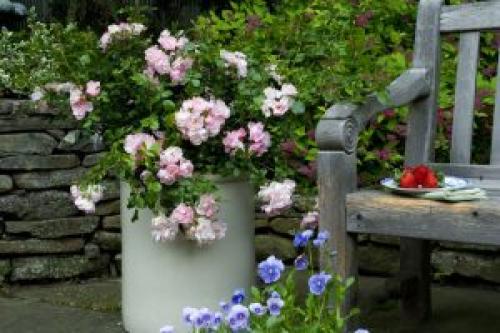

Substrate. Roses love healthy, rich soil. They consume a lot of nutrients in order to grow and flower. For roses in pots, either a ready-made substrate is selected, or they themselves prepare it from the ground, garden compost and rotted manure. Perlite can be added to this mixture as drainage. The correct soil in the pot is more than half the success.
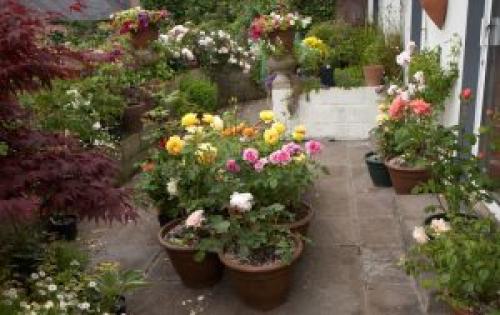

In cold climates, you will need to hide potted roses in a cool room.
Almost all roses grow well in pots. Difficulties will only be caused by large and climbing roses. They have a large root system and need more space around them.


Enjoy your cultivation!
Diseases and pests
Rose bushes sometimes get sick and are exposed to pests. There can be two reasons why your green pet, once full of health, began to wither before our eyes: frequent watering, leading to decay of the root system ("black leg" effect), pests.
Very often, rose bushes become victims of the "spider mite". In this case, the appearance of a thin cobweb wrapping around the stems and leaves will be an alarming signal for you.
Such a mite literally sucks all the forces out of the plant, and is also the causative agent of many diseases. In order to get rid of the spider mite, it is necessary to treat the plant with special medications, 3-4 times with an interval of several days.
And one more good advice ... Growing rose bushes in a city apartment is possible only if you adhere to all of the above recommendations for caring for them.
Do not forget to water your pet regularly, as well as feed it periodically. The frequency of feeding depends on the flowering stage. If the bush is blooming, it is recommended to feed it once every two weeks.
In order to avoid the appearance of diseases and the spread of parasites, inspect the leaves and stems of the pet daily, only in this case, the flower will reciprocate and delight you with the fragrance of graceful buds!
How to grow a potted street rose. How to grow a rose from a cut flower in a potato
This uncomplicated method is already almost a hundred years old, it is suitable specifically for the home, for the scale of an industrial greenhouse it would take too much time and energy consumption. It can be grown both from bushes from a summer cottage in the fall, and from a cut bouquet at any time of the year. There is a lot to help novice gardeners
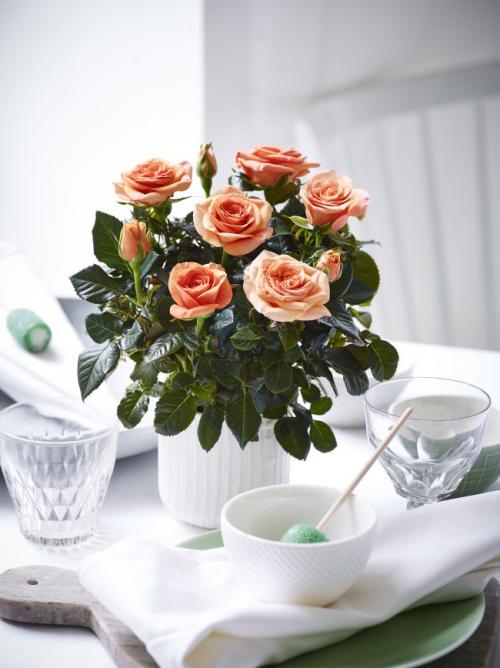

Lovely indoor peach rose
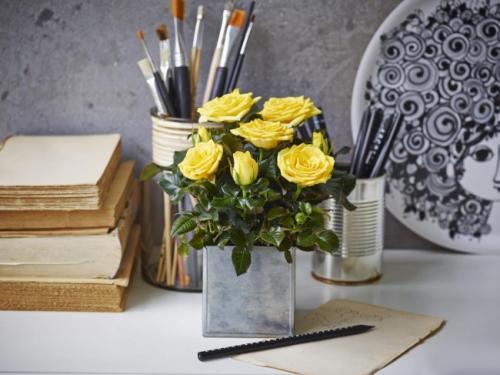

Your every look at such a rose grown with your own hands at home is an elevated mood.
What you need:
- medium sized pots;
- potato tubers;
- bouquet of roses;
- knife;
- large jar;
- drainage stones;
- some sand;
- soil for flowers (any);
- flora restorer.
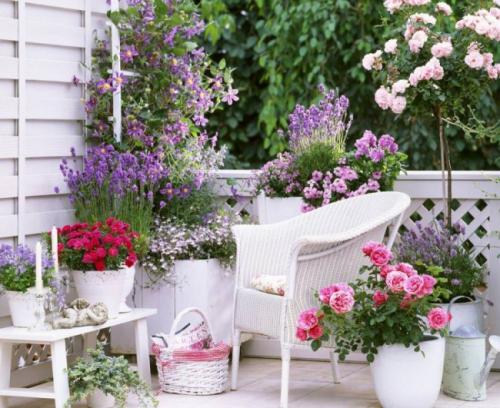

Roses go well with other flowers.
Process:
- We form a pot - pour stones for drainage on the bottom, a layer of sand 3-5 cm, fill in part of the soil.
Advice: if you did not use purchased land, you need to add phytosporin to it to restore microflora. - We prepare the cuttings as described in the section on cuttings and stick the potatoes into the tubers with a lower sharp cut.
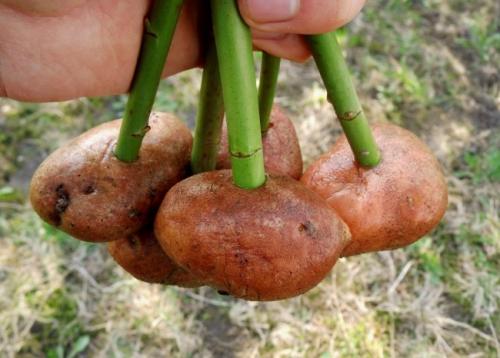

Growing roses in potatoes
- Place the potatoes with the cuttings in prepared pots and sprinkle with earth (drop in).
- Placed in places with good lighting.
- Many gardeners advise using an ordinary jar as a greenhouse, others argue that the potato itself is capable of maintaining the life of the rose stem in the desired state without a greenhouse effect. Roses grow this way and that, you can try both options.
- When the stems harden and grow, they are planted in pots in the usual manner.
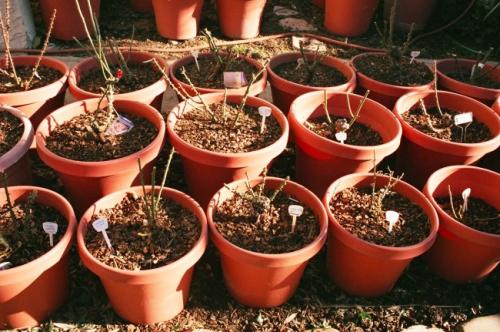

After strengthening the stems, the roses must be transplanted into pots.
It is no secret that many gardeners grow roses for business and therefore are reluctant to share their secrets, considering everyone to be potential competitors. However, some summer residents who have greenhouses learn the same moments from their own experience and willingly share with each other.
Reproduction of rose bushes at home
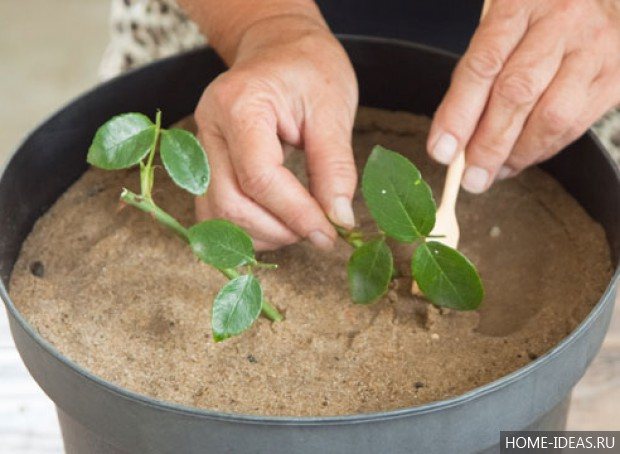

Landing can be done in several ways:
- using seeds;
- by vaccination method;
- by cuttings.
The most optimal and effective method of the above is to grow roses from cuttings. In order for the reproduction procedure to be successful for the cutting, you need to choose a stem with a formed bud.
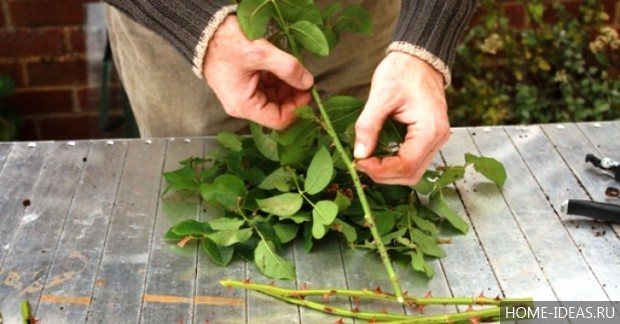

Such samples are the most persistent, since they contain the maximum possible amount of nutrients necessary for the development of the plant's root system. Undoubtedly, there are cases when it was possible to grow a rose bush from a flower included in an ordinary store bouquet, but such precedents are very rare.
So, when choosing a stalk for planting, you need to pay attention to its length, its optimal indicator is about 30 cm.Further, you need to make an incision at a minimum angle of inclination, remove the bud and leaves with a sharp knife.
After performing these manipulations, the cutting should be left in a container of water for 10-15 minutes. Next, you need to process the sections (lower and upper) with potassium permanganate. Before planting the cuttings in the ground, the preparation process of which is described in detail above, it must be kept for 24 hours in a weak solution of heteroauxin. To prepare the solution, it is recommended to adhere to the following proportions: 1 tablet per 1 liter of settled water. Heteroauxin can be replaced with potassium permanganate.
It is recommended to plant the cutting in well-loosened soil, it is important to make sure that the bud (the second node of the cutting) is above the soil.
After planting the cuttings, you need to create a greenhouse. You can use plastic wrap or a cut plastic bottle for this purpose. Watering, spraying should be carried out daily, but in such a way that the root system does not rot.
After some time, when the first leaves appear on the handle, the greenhouse can be removed. To strengthen the root system, flower growers recommend cutting the buds in the first year after the growing season.
HOW TO GROW A ROSE FROM A CUT FLOWER
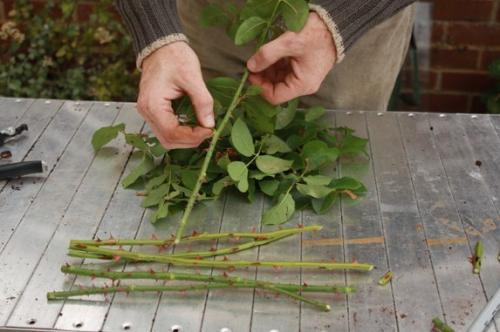

Having received a gorgeous bouquet of flowers as a gift, we put them in a vase and hope that they will stand longer. After all, I want to admire their beauty every day. Many especially skillful growers, having received a bouquet of roses, try to grow a full-fledged living shrub from them. This article will show you how this can be done. It is worth noting that the process of growing a rose from a cutting is quite lengthy and very complicated. It will take two or three years before a full-fledged rosebush grows. The process is quite complex and a positive outcome of the growing process is possible only with careful observance of certain rules. In order to grow a bush from a beautiful rose, you do not need to spoil a gorgeous bouquet at all. Flowers should delight you almost to complete wilting. When the flowers have almost wilted, we cut off the leaves, buds and the flower itself at the cut branch, leave a small stalk about 15 cm in size.Cut the cuttings so that at least three buds remain on them, that is, there should be two internodes on each cuttings. It is imperative to cut the cuttings with a sharp knife. A lower oblique cut is made under the kidney itself, the upper cut is made 0.5 -1.0 cm higher than the kidney. It is important to respect the dimensions, because if you leave the cutting longer, the shoot may dry out, since the cutting may not have enough water, because even without leaves, the cutting consumes water. In addition, water is also consumed due to its evaporation from the surface. How to grow a rose from a cut flower photo Sections need to be moistened with water, then cauterized with dry potassium permanganate. Then dilute a strong solution of potassium permanganate and soak the cutting for a day. We plant the prepared stalk in the ground, leaving 2-3 buds on the surface. Wood-humus mixture is used as a nutrient mixture.For better water permeability and air access, a mixture of peat with sand, preferably river sand, is placed on top. The stalk is planted deeper, because the root system of a young plant is formed, as a rule, on a cut. To accelerate root formation, you can do a treatment with a growth stimulant, it can be the drug Kornevin or Heteroauxin, which are freely sold in stores selling or delivering flowers. A growth stimulator is diluted according to the instructions. Now we create a greenhouse effect, for this we cover the seedling with glass or plastic dishes. The soil should be kept moist and the leaves of the cuttings should be sprayed periodically. For the correct and rapid growth of the root system of a rose from a cut flower, as a rule, the first buds are removed. After the first roots appear, spraying is stopped, and the seedlings are ventilated as often as possible. After about a month, the cuttings should be rooted and the first feeding can be done. You can transplant seedlings into pots after one and a half or two months. In this case, the pot is filled with a mixture of sand, humus and turf in a ratio of 1: 1: 3. The first winter in the life of a young plant is a rather difficult period. In October, the pot with the plant is brought into a room with a low temperature, about 3-5 ° C. In the spring, the matured cuttings are already planted in open ground. The soil for planting is dug onto a shovel bayonet and organic fertilizers are added. So, we have already received a young plant from the branch. But in the first year of life, he needs to pay attention, since it has not yet matured. For example, it is necessary to pick off flowers so that the plant does not deplete. With this technique, the cuttings root by 75-80%. We hope that your efforts will be crowned with success and the roses will delight you with their blooming appearance.
A flower garden on your windowsill
Growing roses at home is a painstaking occupation, which only an experienced florist can handle. In order for a green pet to feel great and regularly delight you with its flowering, the plant needs to create comfortable conditions for growth. First of all, it must be remembered that a rose bush is thermophilic, which means that it is necessary to place flower pots in places where sunlight often looks in.
The flowering frequency depends entirely on the amount of sunlight, while it is important to observe the optimal temperature regime, which varies between 15-20 C. The air should be moderately humid, which is why it is recommended to spray the stems and leaves of the flower with water several times during the day. Watering must be done daily. It is best if for these purposes you use settled water, which flower growers recommend periodically pouring into the pan of the pot.
A few words must be said about the choice of pot and soil. The container should be spacious with the obligatory presence of drainage holes. On the bottom of the pot, you also need to lay some pebbles, and then humus or peat, river sand, clay and black soil should be placed on top of this layer.
Important: humus or peat should be at least 50%, sand - 15% and black soil - about 20%. Note that rose bushes in alkaline soil wither quickly and often get sick.


